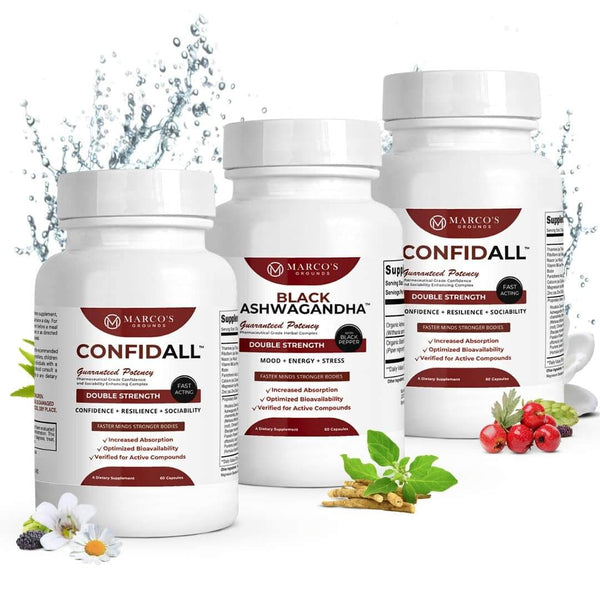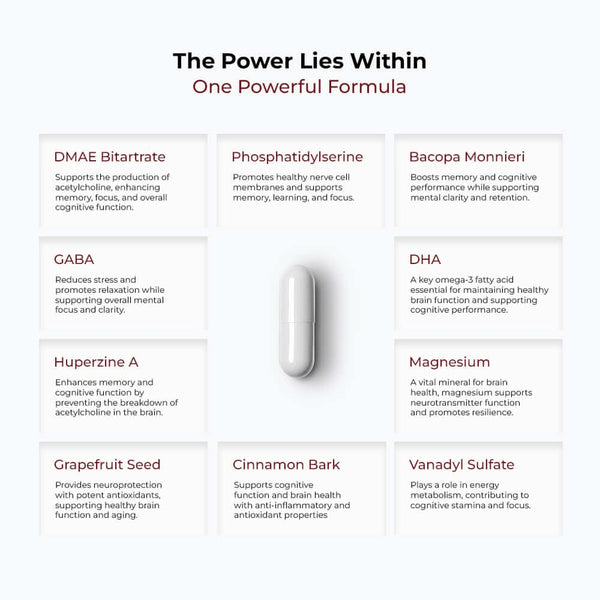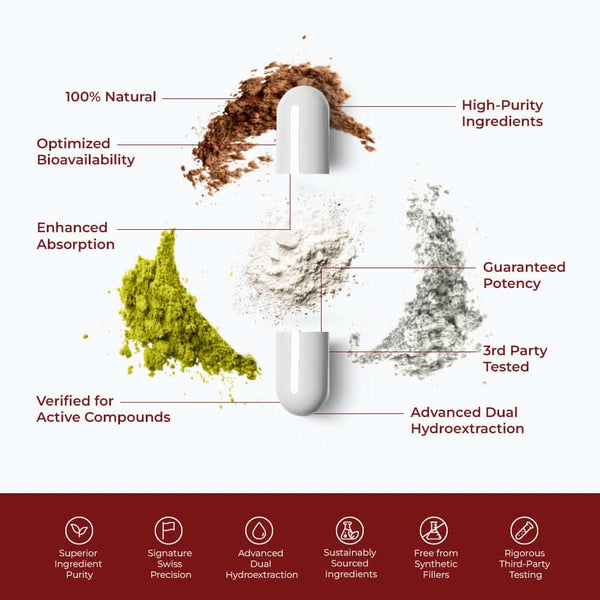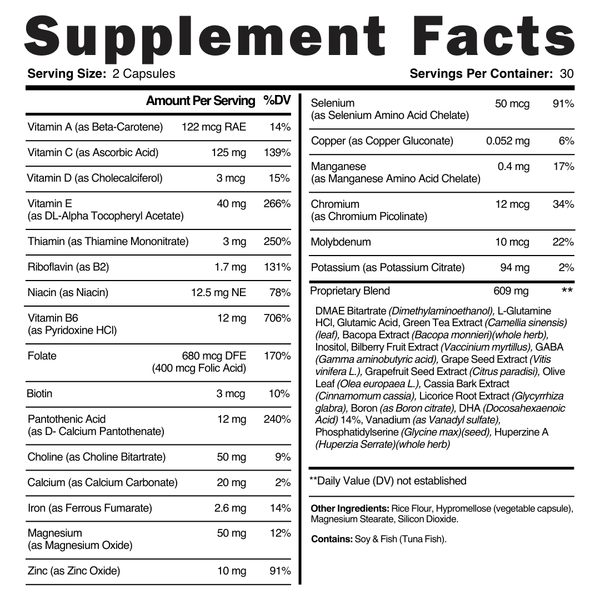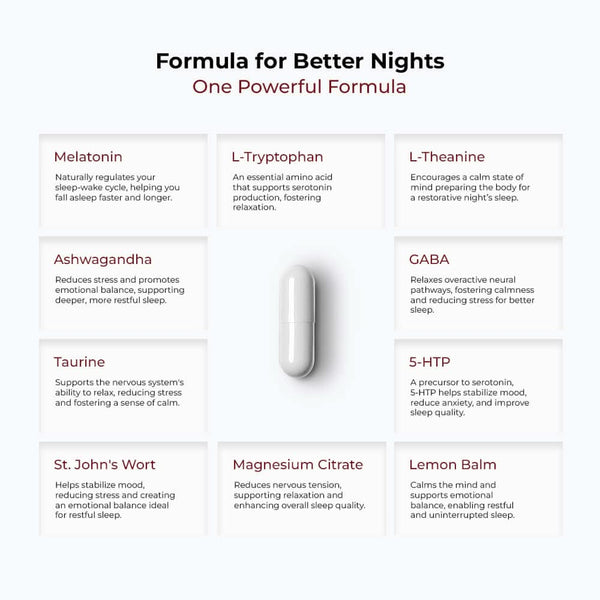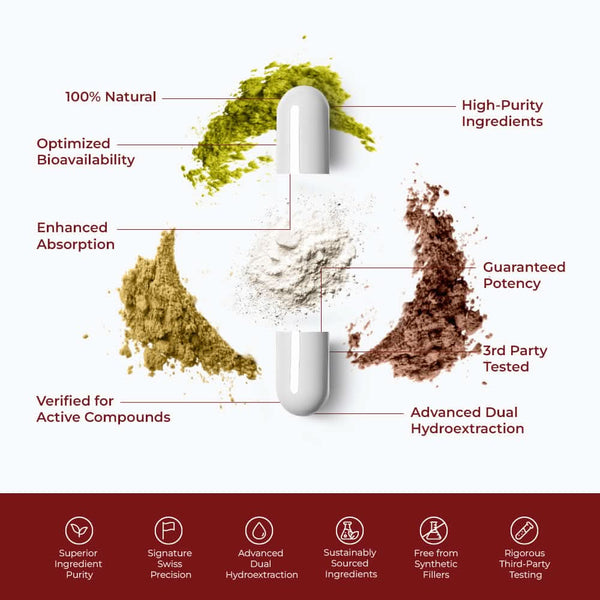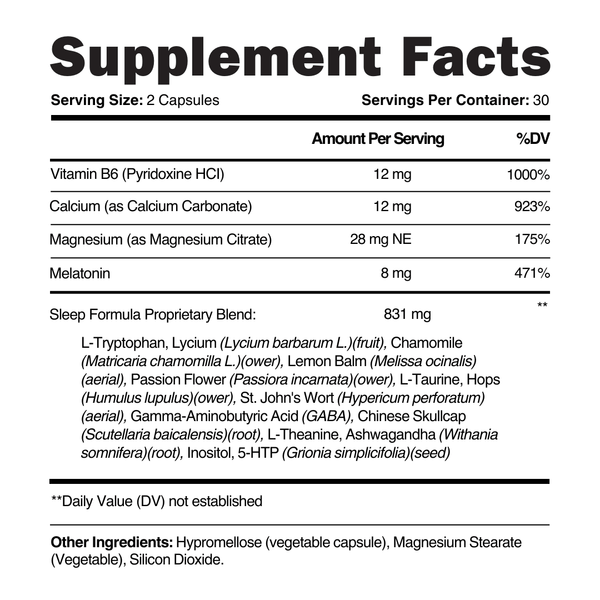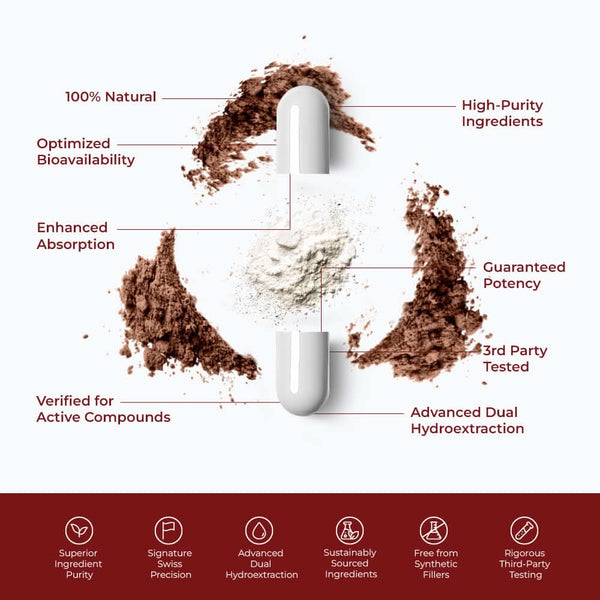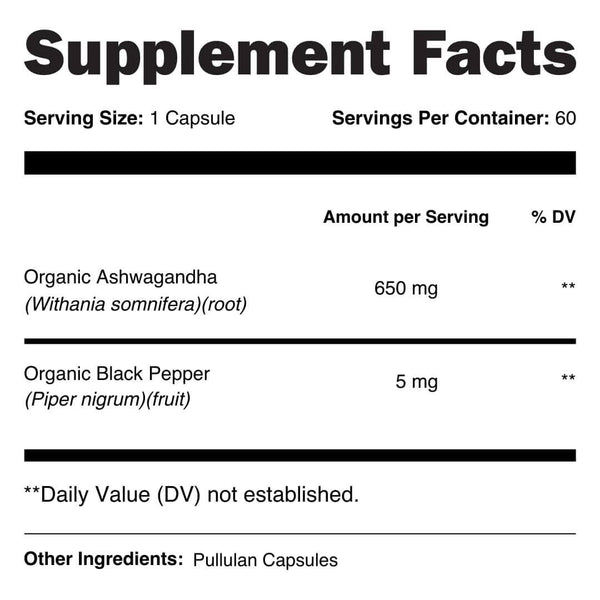Overview
Ashwagandha (Withania somnifera), also known as Indian Ginseng or Winter Cherry, is a revered adaptogen deeply rooted in Ayurvedic medicine. Celebrated for its potent ability to reduce stress, promote relaxation, and support restful sleep, Ashwagandha also enhances mental clarity, focus, and cognitive performance. Its powerful bioactive compounds—primarily withanolides—strengthen the body's resilience, boost physical recovery, and sustain energy, helping individuals thrive under pressure and fatigue.
Other Common Names
- Indian Ginseng
- Winter Cherry
- Withania somnifera
Top Benefits
- Reduces stress and promotes calming relaxation
- Enhances sleep quality and restorative rest
- Supports cognitive clarity, mental focus, and memory
- Boosts physical energy and accelerates recovery
- Strengthens overall stress resilience and hormonal balance
What Is Ashwagandha?
Ashwagandha is a small shrub native to India, North Africa, and the Middle East. Its roots and leaves have been used in Ayurveda for centuries to rejuvenate the body and mind. As a potent adaptogen, it helps the body effectively manage physical, mental, and emotional stress by modulating stress hormones and promoting balanced energy.
Modern research confirms Ashwagandha’s ability to lower cortisol levels, induce relaxation, enhance sleep quality, and improve cognitive function. Additionally, it boosts physical performance, energy endurance, and accelerates recovery, making it a powerful ally for athletes and high-achievers alike. Its versatile adaptogenic effects also support hormonal balance, especially under conditions of chronic stress and fatigue.
Marco’s Grounds™ Ashwagandha Sourcing
At Marco’s Grounds™, we source our Ashwagandha from a family-owned farm in Rajasthan, India — a region known for its nutrient-rich soil and ideal climate for cultivating powerful medicinal herbs.
Grown under sustainable practices, our Ashwagandha is harvested at peak potency to ensure high concentrations of active compounds like withanolides.
Ashwagandha Dosing Principles and Rationale
Clinical evidence supports daily doses of 300–600 mg of standardized Ashwagandha extract containing at least 5% withanolides. At Marco’s Grounds™, we apply precise hormetic dosing principles, optimizing doses for maximum calming effects, improved sleep, and stress resilience, without overstimulating the system.
For optimal results, Ashwagandha is best taken with food, preferably in the evening to support relaxation and restful sleep.
Ashwagandha Key Mechanisms
1. Stress Resilience & Hormonal Balance
• Lowers cortisol levels, promoting a calm, balanced mood [1, 2]
• Modulates the HPA axis to improve stress response [3]
2. Cognitive Function
• Promotes neurogenesis and protects neurons from oxidative damage [4]
• Enhances memory, focus, and processing speed [5]
3. Physical Performance & Energy
• Improves endurance and muscle strength [6]
• Supports mitochondrial health and energy production [7]
4. Sleep & Relaxation
• Enhances sleep quality by modulating GABA activity [8]
• Reduces anxiety and promotes a sense of calm [9]
5. Healthy Aging & Immune Function
• Fights oxidative stress with potent antioxidants [10]
• Supports immune resilience and metabolic health [11]
Synergies with other Marco’s Grounds™ Ingredients
- L-Theanine – Enhances relaxation and focus for stress management.
- Magnesium Glycinate – Amplifies calming effects and promotes sleep.
- Rhodiola Crenulata – Synergizes to improve stress resilience and energy.
References
- Chandrasekhar, K., Kapoor, J., & Anishetty, S. (2012). A prospective, randomized double-blind, placebo-controlled study of safety and efficacy of a high-concentration full-spectrum extract of Ashwagandha root in reducing stress and anxiety in adults. Indian Journal of Psychological Medicine, 34(3), 255–262.
- Lopresti, A. L., Smith, S. J., & Malvi, H. (2019). The effects of Ashwagandha (Withania somnifera) supplementation on biomarkers of stress and aging: A systematic review and meta-analysis. Journal of Alternative and Complementary Medicine, 25(7), 799–812.
- Panossian, A., & Wikman, G. (2010). Effects of adaptogens on the central nervous system and the molecular mechanisms associated with their stress-protective activity. Pharmaceuticals, 3(1), 188–224.
- Kumar, P., & Kumar, A. (2009). Possible neuroprotective effect of Withania somnifera root extract against 3-nitropropionic acid-induced behavioral, biochemical, and mitochondrial dysfunction in an animal model of Huntington’s disease. Journal of Medicinal Food, 12(3), 591–600.
- Choudhary, D., Bhattacharyya, S., & Bose, S. (2017). Efficacy and safety of Ashwagandha root extract in improving memory and cognitive functions. Journal of Dietary Supplements, 14(6), 599–612.
- Sandhu, J. S., Shah, B., Shenoy, S., Chauhan, S., Lavekar, G. S., & Padhi, M. M. (2010). Effects of Withania somnifera and Terminalia arjuna on physical performance and cardiorespiratory endurance in healthy young adults. International Journal of Ayurveda Research, 1(3), 144–149.
- Sood, A., Mehrotra, A., Dhawan, D. K., & Sandhir, R. (2018). Indian Ginseng (Withania somnifera) supplementation ameliorates oxidative stress and mitochondrial dysfunctions in experimental models of stroke. Metabolic Brain Disease, 33(4), 1261–1274.
- Bhattacharya, S. K., Bhattacharya, D., Sairam, K., & Ghosal, S. (2000). Anxiolytic-antidepressant activity of Withania somnifera glycowithanolides: An experimental study. Phytomedicine, 7(6), 463–469.
- Raut, A. A., Rege, N. N., Tadvi, F. M., Solanki, P. V., Shirolkar, S. G., Kene, K. R., & Vaidya, A. B. (2012). Exploratory study to evaluate tolerability, safety, and activity of Ashwagandha in healthy volunteers. Journal of Ayurveda and Integrative Medicine, 3(3), 111–114.
- Gupta, S. K., Dua, A., & Vohra, B. P. (2003). Withania somnifera attenuates antioxidant defense in aged spinal cord and inhibits copper-induced lipid peroxidation. Drug Metabolism and Drug Interactions, 19(3), 211–222.
- Pingali, U., Pilli, R., & Fatima, N. (2014). Effect of standardized aqueous extract of Withania somnifera on tests of cognitive and psychomotor performance in healthy human participants. Pharmacognosy Research, 6(1), 12–18.



